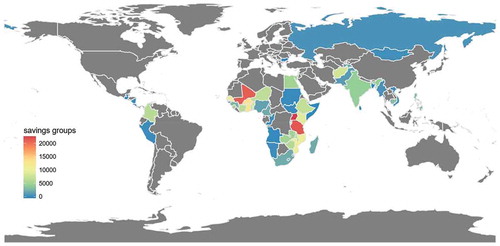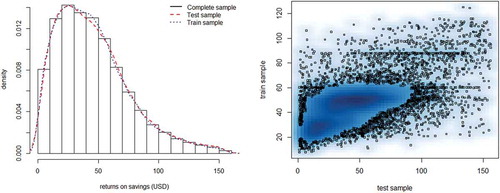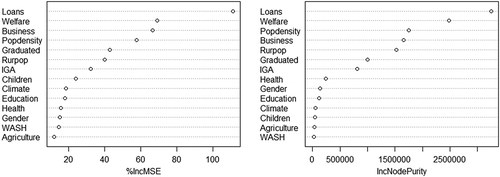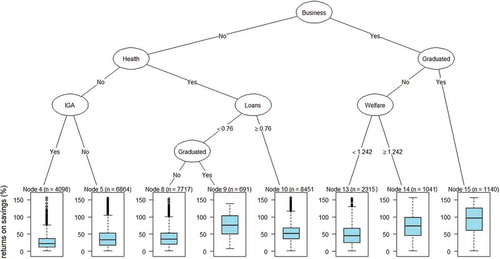Figures & data
Figure 1. Geographical distribution of grass-root financial groups in the SAVIX database. Half of the groups in the database are located in eight African countries: Uganda (22702 groups), Tanzania (21374 groups), Mali (21021 groups), Burkina Faso (13680 groups), Ghana (12337 groups), Mozambique (10244 groups), Senegal (10148 groups) and Kenya (8906 groups).

Table 1. Descriptive statistics of the variables in the SAVIX database.
Figure 2. Left: Histogram of returns on savings (ROS) of grass-root groups in the SAVIX. Right: Scatterplot of the ROS in the trained and test samples used for cross-validation in the random forest.

Table 2. Text-mining results for the 12 more frequent words in the records of development services offered to grass-root financial associations in the SAVIX. The textual records of development programs in the SAVIX database are written in English, French and Portuguese. The texts in French and Portuguese were translated to English. IGA: income-generating activities.
Figure 3. Text-mining of the sustainable development programs provided to grass-root associations in the SAVIX. The size of the words represents the frequency of the records (higher frequency, higher size). As part of the text-mining exercise, the records of development programs in the SAVIX were transformed into a lower-case corpus and were cleaned from special characters, English stop-words, punctuations, extra white spaces and numbers.

Table 3. Cross-validation results to select the number of splitting variables in the models of random forests.
Figure 4. Results of the random forests. The importance of each variable for the generation of returns in grass-root financial associations is measured with the increase in the mean squared error of prediction (IncMSE, left) and the increase in node impurity (IncNodePurity, right). IncMSE is the error of prediction caused by a specific variable being excluded from the model. In the case of IncNodePurity, the most relevant variables have a higher inter node variance and a smaller intra node variance.


